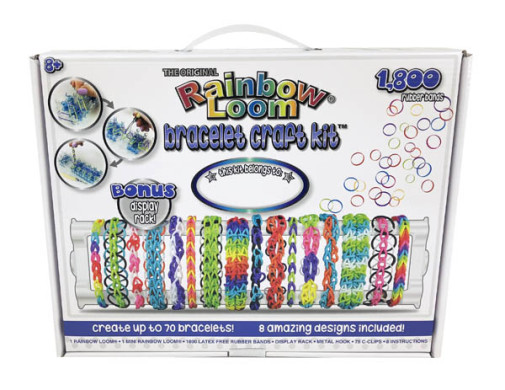We use cookies to make your experience better. To comply with the new e-Privacy directive, we need to ask for your consent to set the cookies. Learn more.
Rainbow Loom Rubber Band Bracelet Craft Kit | Create 70 Bracelets
- Become a master bracelet maker with this fun and colorful rubber band bracelet crafting kit from Rainbow Loom!
- With over 1,800 rubber bands included, your imagination is the limit!
- Perfect for kids, teens, and parents who love to craft and create
- Small parts. Not for children under 3 years.
Loom for hours on end with the Rainbow Loom Bracelet Craft Kit! By following the step-by-step loom patterns, you can loop cool rubber band bracelets for your family and friends or to style yourself! The reusable cardboard storage container includes an original Rainbow Loom, a Mini Rainbow Loom, 1,800 assorted latex-free rubber bands (3 packages; colors may vary from pictures), an 11" display rack, a metal hook, 75 C-clips, 12 gift bags (3" x 5"), and 8 bracelet instruction pages with pictures (9" x 11.5"). Box features a hook and loop clasp and a travel handle. Comes with everything you need to make around 40 bracelets. ~Sarah E
Create fun for all with the new all-in-one Rainbow Loom Bracelet Craft Kit! Learn to be a pro bracelet maker with the easy to follow instruction guides. Everything is included! Rainbow Loom®, Mini Loom, 1,800+ rubber bands, 75+ c-clips, all NEW bracelet display rack and printed instructions to create eight amazing designs.The kit also comes with a organizer case for storage and a handle for easy travel use. Dimensions: 12.7" by 10" by 2". Weight: 1.7 lbs.


Gift requested
My daughters had these and enjoyed them, so we are buying one for our niece.